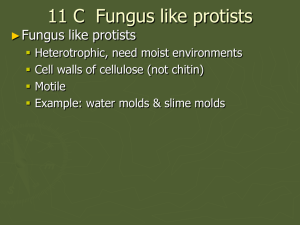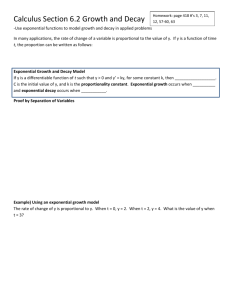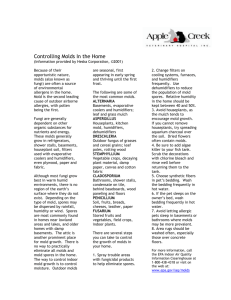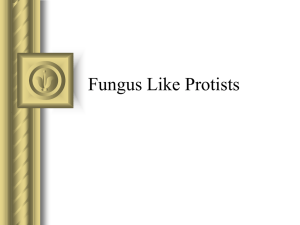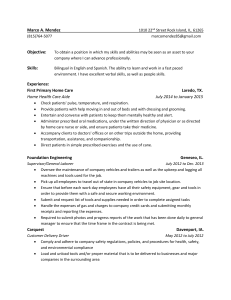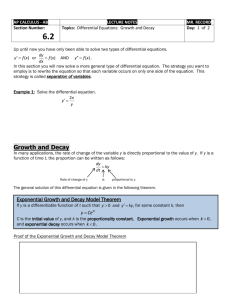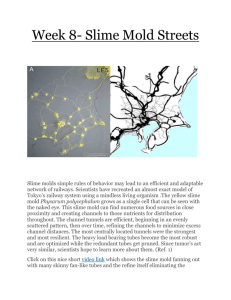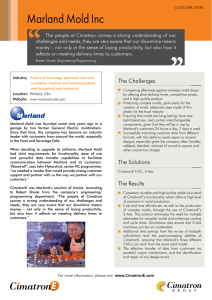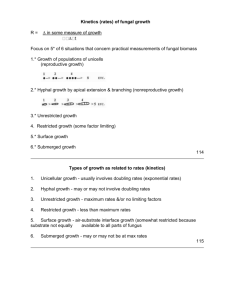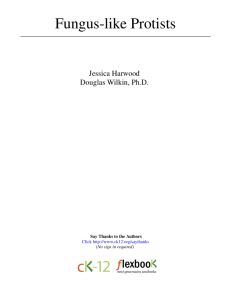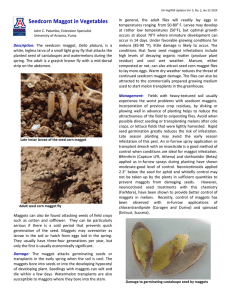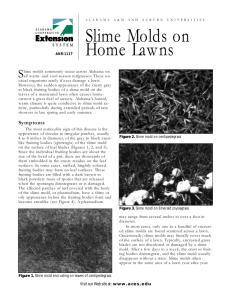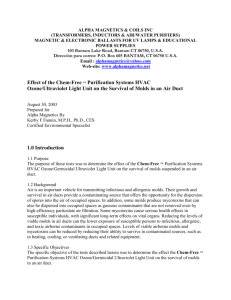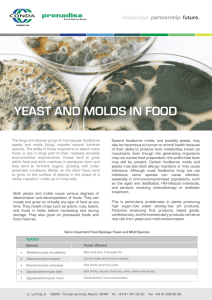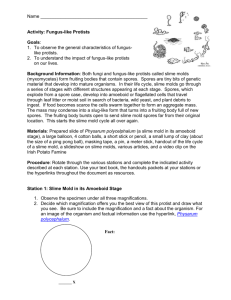Science of Decay
advertisement
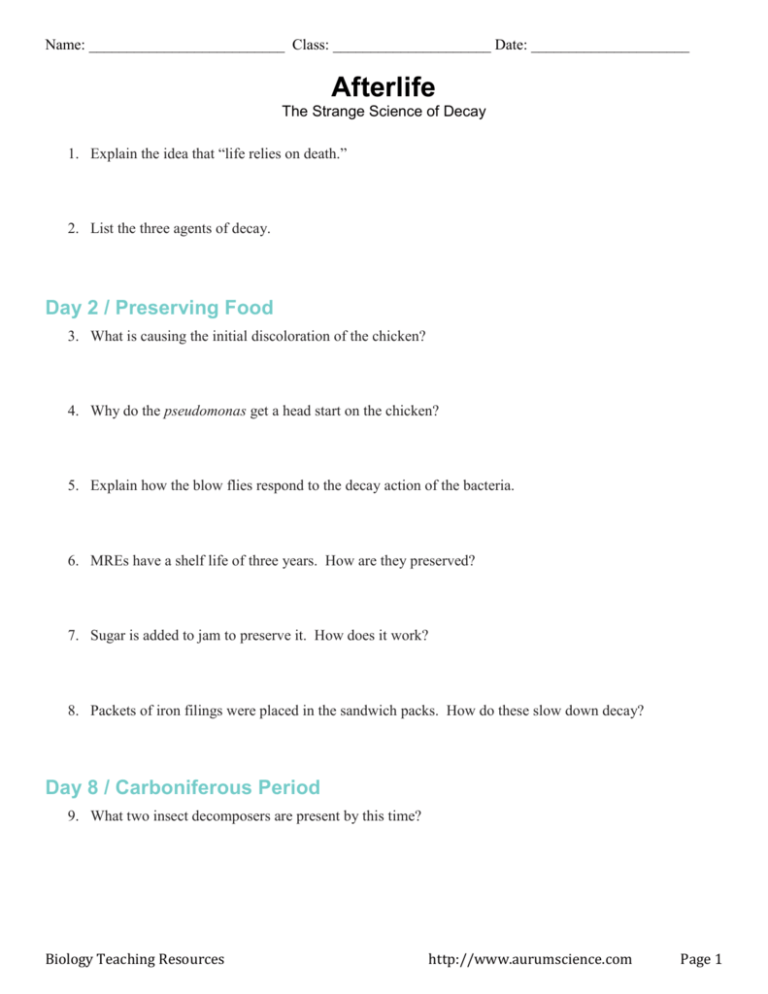
Name: __________________________ Class: _____________________ Date: _____________________ Afterlife The Strange Science of Decay 1. Explain the idea that “life relies on death.” 2. List the three agents of decay. Day 2 / Preserving Food 3. What is causing the initial discoloration of the chicken? 4. Why do the pseudomonas get a head start on the chicken? 5. Explain how the blow flies respond to the decay action of the bacteria. 6. MREs have a shelf life of three years. How are they preserved? 7. Sugar is added to jam to preserve it. How does it work? 8. Packets of iron filings were placed in the sandwich packs. How do these slow down decay? Day 8 / Carboniferous Period 9. What two insect decomposers are present by this time? Biology Teaching Resources http://www.aurumscience.com Page 1 10. Label the fruiting body, filament, and spore heads in the mold diagram below. 11. In general, what food sources do molds prefer? 12. Mold and bacteria compete over the same food sources. How do molds fight off the bacteria? 13. Explain how ingesting mold can be dangerous to humans. 14. What happened when trees first evolved wood during the Carboniferous Period that couldn’t be decayed. a. Effect on atmosphere: b. Effect on insects: 15. The fungus decomposing lignin in the wood piece was growing hyphae. Explain what these are for. Day 16 16. Why did the Sexton Beetles bury the rat? Page 2 17. Which types of foods do maggots prefer? 18. Why do maggots feed as a pack instead of separately? 19. Label the hooks, circular bands, and spiracles of the maggot. 20. Explain the function of each of the parts of the maggot. a. Hooks – b. Circular Bands – c. Spiracles – 21. Why do maggots breathe out of their rear instead of their front? 22. Humans find the smell of decaying material to be offensive and repellant. Why might we have evolved this revulsion? Day 23 / Decay Forensics 23. Fish and meat produce a much more repulsive smell when rotting than fruit or vegetables. Why is this? 24. Explain the physical differences between the two pigs shown in the experiment: a. Pig 1 (Bloating) – b. Pig 2 (Liquifying) – 25. How is the “fingerprint of decay” measured? Page 3 26. What applications might measuring soil like this have for forensic science? Day 37 / Slime Molds 27. What effect do the flies have on the molds growing on the fruit? 28. Why do some fungi, like the stinkhorn, attract flies? 29. Why do slime molds grow multiple tubes that connect to each of the oat flakes (food)? 30. How do slime molds transmit information across their entire network? Day 44 31. What is different about the conditions of the house that favors larder beetles instead of flies? 32. Describe what the sexton beetles did with the rat carcass. Day 52 33. Explain how nitrogen atoms are transferred from dead mustard plant material into new marigold seedlings. 34. How much stronger is a fiber made of carbon nanotubes than the aramid material? Page 4
